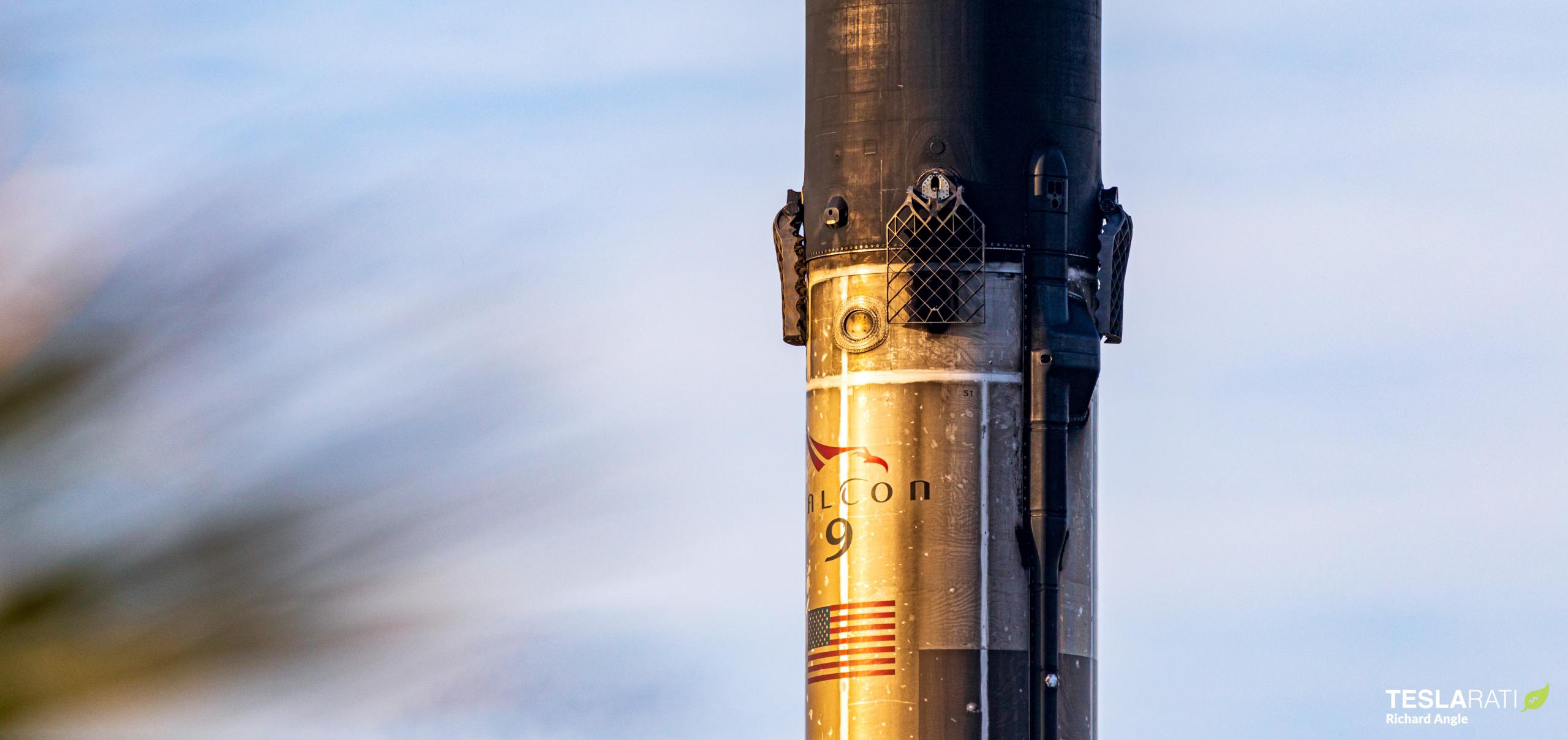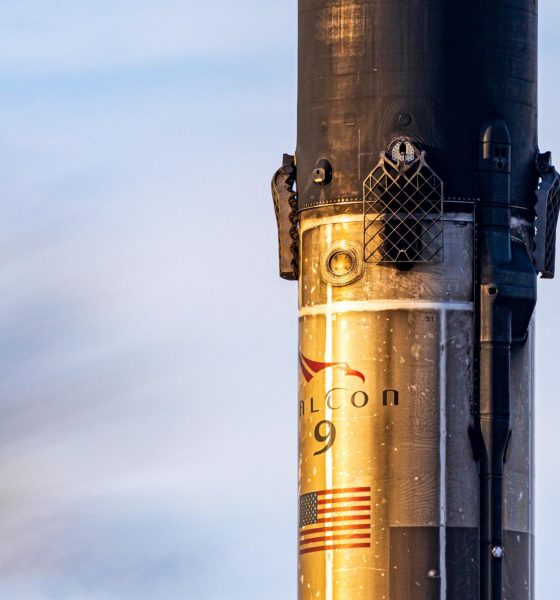

News
SpaceX’s Starlink fleet is about to cross the 1000-satellite mark
While SpaceX technically launched its 1000th Starlink satellite on January 20th, the company’s next launch could give Starlink 1000 working satellites for the first time ever.
Pushed from January 27th to no earlier than (NET) Sunday, January 31st by an apparent lack of drone ship availability, SpaceX’s 17th Starlink “v1.0” launch and 18th dedicated mission overall is on track to add another 60 satellites to the constellation. If the launch is successful and at least 90% of spacecraft are in good health after deployment, SpaceX will find itself with up to 1022 Starlink satellites – at least 1000 of which are functional.
NextSpaceflight reports that SpaceX has assigned Falcon 9 booster B1049 to Starlink-17, meaning that the company is about to launch another booster for the eighth time less than two weeks after Falcon 9 B1051 became the first to do so. Unlike B1051, though, which exemplified SpaceX’s recent decision to only static fire flight-proven boosters on a data-driven basis, Spaceflight Now says that Falcon 9 B1049 will be static fired prior to its eighth launch attempt.
Perhaps just four days after B1049’s Sunday launch, another SpaceX Falcon 9 rocket is scheduled to launch 60 more Starlink satellites on February 4th. As of January 28th, Starlink-17 is scheduled to launch no earlier than 7:02 am EST (12:02 UTC), January 31st, followed by Starlink-18 as soon as 1:19 am EST (06:19 UTC) on Thursday, February 4th. At least two more Starlink missions are nominally scheduled to launch in February.
Altogether, if it manages to squeeze Starlink-17 in before the end of January, SpaceX will have completed the first of ten or eleven four-launch months needed to achieve its target of 48 launches in 2021. SpaceX completed four launches in one month for the first time ever in November 2020, making an average cadence of four launches per month a clear uphill battle. However, a 48-launch year will become substantially more plausible if SpaceX manages to launch Starlink-17 this Sunday, turning a possible fluke into something demonstrably repeatable.
As Starlink launches begin to ramp up again, SpaceX’s satellite constellation growth is poised to skyrocket. For unknown reasons, a vast majority of the ~~950 Starlink v1.0 satellites currently in orbit are performing phasing maneuvers, meaning they have dropped slightly below their operational altitude to tweak specific orbital parameters. Once the constellation stabilizes and all current satellites complete their orbit-raising, Starlink – around 1000 operational satellites strong – should easily have the capacity and coverage for SpaceX to begin a dramatic expansion of its internet beta.

News
Tesla FSD fleet is nearing 7 billion total miles, including 2.5 billion city miles
As can be seen on Tesla’s official FSD webpage, vehicles equipped with the system have now navigated over 6.99 billion miles.

Tesla’s Full Self-Driving (Supervised) fleet is closing in on almost 7 billion total miles driven, as per data posted by the company on its official FSD webpage.
These figures hint at the massive scale of data fueling Tesla’s rapid FSD improvements, which have been quite notable as of late.
FSD mileage milestones
As can be seen on Tesla’s official FSD webpage, vehicles equipped with the system have now navigated over 6.99 billion miles. Tesla owner and avid FSD tester Whole Mars Catalog also shared a screenshot indicating that from the nearly 7 billion miles traveled by the FSD fleet, more than 2.5 billion miles were driven inside cities.
City miles are particularly valuable for complex urban scenarios like unprotected turns, pedestrian interactions, and traffic lights. This is also the difference-maker for FSD, as only complex solutions, such as Waymo’s self-driving taxis, operate similarly on inner-city streets. And even then, incidents such as the San Francisco blackouts have proven challenging for sensor-rich vehicles like Waymos.
Tesla’s data edge
Tesla has a number of advantages in the autonomous vehicle sector, one of which is the size of its fleet and the number of vehicles training FSD on real-world roads. Tesla’s nearly 7 billion FSD miles then allow the company to roll out updates that make its vehicles behave like they are being driven by experienced drivers, even if they are operating on their own.
So notable are Tesla’s improvements to FSD that NVIDIA Director of Robotics Jim Fan, after experiencing FSD v14, noted that the system is the first AI that passes what he described as a “Physical Turing Test.”
“Despite knowing exactly how robot learning works, I still find it magical watching the steering wheel turn by itself. First it feels surreal, next it becomes routine. Then, like the smartphone, taking it away actively hurts. This is how humanity gets rewired and glued to god-like technologies,” Fan wrote in a post on X.
News
Tesla starts showing how FSD will change lives in Europe
Local officials tested the system on narrow country roads and were impressed by FSD’s smooth, human-like driving, with some calling the service a game-changer for everyday life in areas that are far from urban centers.

Tesla has launched Europe’s first public shuttle service using Full Self-Driving (Supervised) in the rural Eifelkreis Bitburg-Prüm region of Germany, demonstrating how the technology can restore independence and mobility for people who struggle with limited transport options.
Local officials tested the system on narrow country roads and were impressed by FSD’s smooth, human-like driving, with some calling the service a game-changer for everyday life in areas that are far from urban centers.
Officials see real impact on rural residents
Arzfeld Mayor Johannes Kuhl and District Administrator Andreas Kruppert personally tested the Tesla shuttle service. This allowed them to see just how well FSD navigated winding lanes and rural roads confidently. Kruppert said, “Autonomous driving sounds like science fiction to many, but we simply see here that it works totally well in rural regions too.” Kuhl, for his part, also noted that FSD “feels like a very experienced driver.”
The pilot complements the area’s “Citizen Bus” program, which provides on-demand rides for elderly residents who can no longer drive themselves. Tesla Europe shared a video of a demonstration of the service, highlighting how FSD gives people their freedom back, even in places where public transport is not as prevalent.
What the Ministry for Economic Affairs and Transport says
Rhineland-Palatinate’s Minister Daniela Schmitt supported the project, praising the collaboration that made this “first of its kind in Europe” possible. As per the ministry, the rural rollout for the service shows FSD’s potential beyond major cities, and it delivers tangible benefits like grocery runs, doctor visits, and social connections for isolated residents.
“Reliable and flexible mobility is especially vital in rural areas. With the launch of a shuttle service using self-driving vehicles (FSD supervised) by Tesla in the Eifelkreis Bitburg-Prüm, an innovative pilot project is now getting underway that complements local community bus services. It is the first project of its kind in Europe.
“The result is a real gain for rural mobility: greater accessibility, more flexibility and tangible benefits for everyday life. A strong signal for innovation, cooperation and future-oriented mobility beyond urban centers,” the ministry wrote in a LinkedIn post.
News
Tesla China quietly posts Robotaxi-related job listing
Tesla China is currently seeking a Low Voltage Electrical Engineer to work on circuit board design for the company’s autonomous vehicles.

Tesla has posted a new job listing in Shanghai explicitly tied to its Robotaxi program, fueling speculation that the company is preparing to launch its dedicated autonomous ride-hailing service in China.
As noted in the listing, Tesla China is currently seeking a Low Voltage Electrical Engineer to work on circuit board design for the company’s autonomous vehicles.
Robotaxi-specific role
The listing, which was shared on social media platform X by industry watcher @tslaming, suggested that Tesla China is looking to fill the role urgently. The job listing itself specifically mentions that the person hired for the role will be working on the Low Voltage Hardware team, which would design the circuit boards that would serve as the nervous system of the Robotaxi.
Key tasks for the role, as indicated in the job listing, include collaboration with PCB layout, firmware, mechanical, program management, and validation teams, among other responsibilities. The role is based in Shanghai.
China Robotaxi launch
China represents a massive potential market for robotaxis, with its dense urban centers and supportive policies in select cities. Tesla has limited permission to roll out FSD in the country, though despite this, its vehicles have been hailed as among the best in the market when it comes to autonomous features. So far, at least, it appears that China supports Tesla’s FSD and Robotaxi rollout.
This was hinted at in November, when Tesla brought the Cybercab to the 8th China International Import Expo (CIIE) in Shanghai, marking the first time that the autonomous two-seater was brought to the Asia-Pacific region. The vehicle, despite not having a release date in China, received a significant amount of interest among the event’s attendees.








